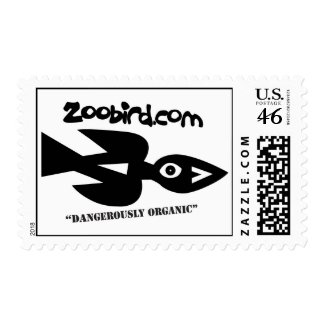Dangerously organic!
There is a “movement” in the US that revolves around food. Words such as: local, grassroots, small, organic, natural, alternative, sustainable, regenerative, specialty, niche, family, community supported, whole, fresh, foodsheds, farmer’s markets, cooperatives, pick-your-own, buying clubs, food security, agritourism, rural development, and farmland preservation give a general idea of this trend. It is fueled by the eternal attraction of foods and farming; health problems related to diet; energy shortages; and public anxiety about safety and quality. It is enabled by information technology of all types.
Local foods still account for a tiny share of the U.S. market, but the demand and potential are much greater. Americans will always be importing food from far away places. However, if only a quarter of the supply were local/regional, a transformation of rural landscape and culture might result. Given current trends, that does not seem unlikely.
How can we define this movement? Terms like ‘natural’, ‘organic’, ‘sustainable’, ‘whole’, and even ‘local’ may mean something different to everybody.
This is a consumer-driven movement. So, in terms of what people want, key factors might include: better health; a better environment; security; and personal involvement. Let’s look at each factor:
1. Health is hard to define exactly – it means something different to each person, and it is how consumers define it that matters. Consumers will make a food selection by comparing quality factors against price. The way to help consumers make this decision is to offer products that are well-documented. Better documentation also serves to improve accountability and consumer confidence. Note also that confidence is greater if consumers have a relationship to the farms or suppliers, meaning that local suppliers are generally more accountable and therefore trusted. Documentation and local sourcing help to address the health component.
2. Environment: Environmental concern is usually a function of distance from home – the nearer to home, the more concern. Local agriculture is perceived as environmentally friendly, even though the smaller ventures have their own potential impacts. Once again, transparency is the key to accountability, and local production provides a much better chance for relationships, awareness, and trust.
The local/sustainable movement can build a strong relationship between people and their environment. Consumers can become more involved and influential in their region. Farm acreage can increase in value. Planners can designate larger areas for agricultural uses, and urban sprawl can be reduced. The locations and types of farm operations can be regulated in order to meet water quality, air quality, and habitat requirements. For example, an urban area that has surface water problems may restrict intensive livestock operations in the watershed, and populated rural areas may restrict raw manures near houses.
If they are well-informed, consumers can influence production practices in other parts of the world as well (eg. Fair trade coffee). The more accurate the information about food products, the greater the influence.
3. Security issues are addressed in many ways. First, the security of having more control over the environment, as landscapes are dedicated to beneficial uses and there is a sustained public investment in environmental quality. Second, food security – a guaranteed supply of food based on regional sources, rather than reliance on remote sources over which the public has little control. Third, a distribution system that can efficiently transport vegetables can also enhance the distribution of services in general, including emergency response. It does this by building regional integrity as well as response methodology.
4. Personal involvement: the organic movement facilitates a personal relationship with the food supply, providing many types of rewarding activities. To name a few: agri-tourism, pick-your-own food, farmers markets; co-ops and buying clubs; volunteering in markets and distribution, managing organizations; food justice, farm-to-school, and educational programs; food-based activities at churches; cool events, such as farm concerts, or a BuyFreshBuyLocal extravaganza at an alternative brewery in blighted NE Philadelphia. The need that people have to get better connected with their food supply, their environment, their community and each other is a major part of this movement.
Summarizing the above discussion, it appears this movement should focus on:
• maximizing local and regional production vs. remote sources
• public participation
• documentation and accountability
• planning and regulatory processes targeting farmland preservation, environment and security
Local foods still account for a tiny share of the U.S. market, but the demand and potential are much greater. Americans will always be importing food from far away places. However, if only a quarter of the supply were local/regional, a transformation of rural landscape and culture might result. Given current trends, that does not seem unlikely.
How can we define this movement? Terms like ‘natural’, ‘organic’, ‘sustainable’, ‘whole’, and even ‘local’ may mean something different to everybody.
This is a consumer-driven movement. So, in terms of what people want, key factors might include: better health; a better environment; security; and personal involvement. Let’s look at each factor:
1. Health is hard to define exactly – it means something different to each person, and it is how consumers define it that matters. Consumers will make a food selection by comparing quality factors against price. The way to help consumers make this decision is to offer products that are well-documented. Better documentation also serves to improve accountability and consumer confidence. Note also that confidence is greater if consumers have a relationship to the farms or suppliers, meaning that local suppliers are generally more accountable and therefore trusted. Documentation and local sourcing help to address the health component.
2. Environment: Environmental concern is usually a function of distance from home – the nearer to home, the more concern. Local agriculture is perceived as environmentally friendly, even though the smaller ventures have their own potential impacts. Once again, transparency is the key to accountability, and local production provides a much better chance for relationships, awareness, and trust.
The local/sustainable movement can build a strong relationship between people and their environment. Consumers can become more involved and influential in their region. Farm acreage can increase in value. Planners can designate larger areas for agricultural uses, and urban sprawl can be reduced. The locations and types of farm operations can be regulated in order to meet water quality, air quality, and habitat requirements. For example, an urban area that has surface water problems may restrict intensive livestock operations in the watershed, and populated rural areas may restrict raw manures near houses.
If they are well-informed, consumers can influence production practices in other parts of the world as well (eg. Fair trade coffee). The more accurate the information about food products, the greater the influence.
3. Security issues are addressed in many ways. First, the security of having more control over the environment, as landscapes are dedicated to beneficial uses and there is a sustained public investment in environmental quality. Second, food security – a guaranteed supply of food based on regional sources, rather than reliance on remote sources over which the public has little control. Third, a distribution system that can efficiently transport vegetables can also enhance the distribution of services in general, including emergency response. It does this by building regional integrity as well as response methodology.
4. Personal involvement: the organic movement facilitates a personal relationship with the food supply, providing many types of rewarding activities. To name a few: agri-tourism, pick-your-own food, farmers markets; co-ops and buying clubs; volunteering in markets and distribution, managing organizations; food justice, farm-to-school, and educational programs; food-based activities at churches; cool events, such as farm concerts, or a BuyFreshBuyLocal extravaganza at an alternative brewery in blighted NE Philadelphia. The need that people have to get better connected with their food supply, their environment, their community and each other is a major part of this movement.
Summarizing the above discussion, it appears this movement should focus on:
• maximizing local and regional production vs. remote sources
• public participation
• documentation and accountability
• planning and regulatory processes targeting farmland preservation, environment and security
Comment
-
Comment by Ellen Bush on January 28, 2009 at 10:10am
-
Enjoyed your blog! This is greatly needed to make our world a better place.
-
Comment by Michael Levin on January 27, 2009 at 4:21pm
-
Very informative. Thanks, David. I learned a lot from this.
© 2025 Created by Michael Levin.
Powered by
![]()






You need to be a member of Zoobird to add comments!
Join Zoobird